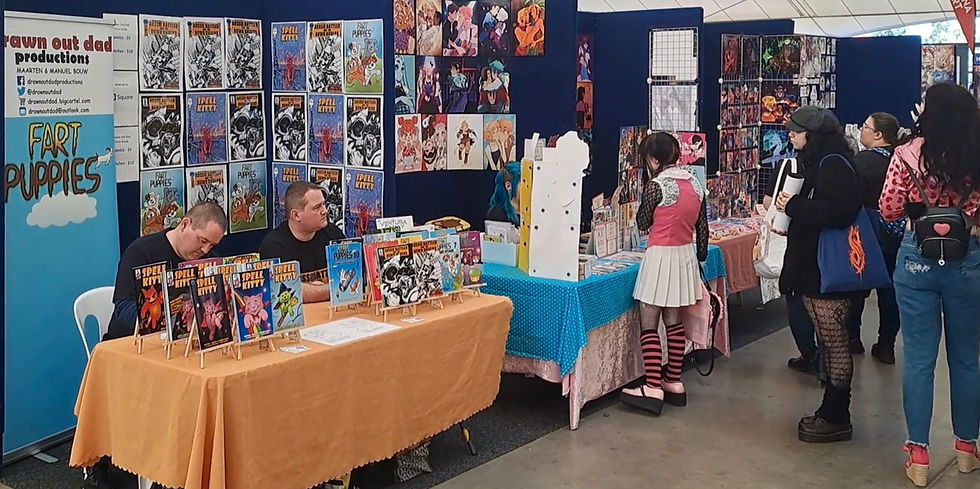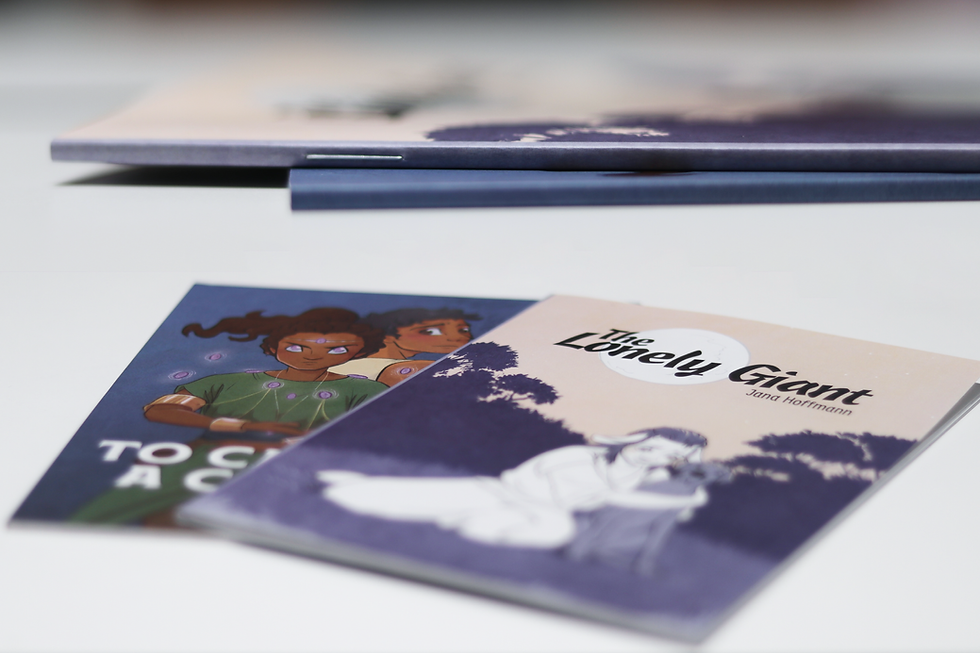Glue, Globalism, and the Big Split in Australian Comics
- 103997752
- Jul 20
- 4 min read
Updated: Jul 23
Australia’s comic scene is splintered, retailers say, with distribution disruptions and changing audience tastes leaving little success for fresh Aussie artists. Brent Lynn reports.
Over 40 years ago, Australia's comic book publishers closed their doors permanently when distributors opted to sell their products to stores dedicated to the comic book trade. Called direct market distribution, the model allowed distributors more control over their pricing, but at the cost of homegrown brick-and-mortars and their history.
“They were comics. No one cared, no one bothered to keep history,” said Joseph Italiano, owner of Melbourne’s Alternate Worlds, Australia’s longest-standing comics dealership since 1977.
Italiano organised Australia’s first comic conventions in the 70’s and watched as a wave of independent Australian creators rose with the small press movement. Conventions, then, and now, are the centre of the scene. While the switch to direct market distribution initially caused a surge in profitability, in the long term, it has shrunk the audience and isolated comics to specialty stores.
Despite this, over the past decade, a new wave of creators has joined Australia’s uniquely splintered market.

Australian comics were limited to hobbyists for decades, but new genres, formats, and funding have spurred artists to branch out. “At Supanova, Nicola Scott was telling her story about how when she was 27, she hated [her] career [and] wanted to draw Wonder Woman," remembers 2022 CAAA award comic artist Jana Hoffman, who moved into comic art after a career change.
"She upended her life, moved to the US, and 5 years later, with hard work, she was drawing Wonder Woman. She got that dream gig. I was 28 at the time. I found that inspiring."
The comic scene has largely been a male-dominated space; however, audiences and creators are diversifying too, with 54% of creators under-30 identifying as female and 19% as transgender/non-binary, whereas the over-30 demographics show a two-thirds male majority that only grows with age, according to Creative Australia.
However, these demographics face another split, in matters of format; international polls show artist gender heavily correlates to format. ‘Floppies’, the term for staple-bound single issues, is the format of choice for male artists by over 50%, with graphic novels split evenly between demographics, and webcomics the dominant choice for female and trans creators.
The split further widens by gender and genre tastes. "I read a lot of webcomics,” said Jana Hoffman.
“I'm not into Super Hero comics. [The] traditional comics market hasn't really attracted me. I was attracted to fantasy genre [comics]."
Hoffman is among the audience of webcomic providers, like Webtoon, whose titles reach millions of primarily women and produce largely romance and fantasy works. In comparison, Marvel and DC, who own a combined 59% market share of the comic book trade, rarely sell a single title above 100 thousand sales to their dominant male audience.
Before the advent of larger webcomics platforms, the career paths for Australians were to go overseas or sell limited print-run floppies at conventions and comic stores with no hope of expansion. “[Australia’s] just different. The disadvantage is the smaller population, and distributing in other countries,” Italiano said, speaking as Australia’s only recognised sub-distributor regarding Australia’s lack of floppy publishers and distributors, which raises prices for comics that many stores are unwilling to stock.
“Sales-wise, no store in their right mind would stock indies. It's not cost-effective,” said Italiano, “[We] don't do it to make money.”
The audience split has altered artists’ potential career trajectories. “I used webcomics as a guide for how I could approach a comics career,” said Hoffman. “Webcomics are very reliant on Kickstarter,” she said, explaining her five successful crowdfunded printing efforts.
Speaking as a retailer, Italiano advises indie creators to pay attention to the retail space. “A lot of indies [don’t] understand that you need retail exposure. Kickstarter is great to get things off the ground, but it’s also the biggest negative [for] stores to carry it.” Kickstarters have few backers but higher costs to account for small print runs. “Once it’s been on Kickstarter, everyone who wanted it already got it.”

Jana and many new wave artists don’t view comic stores as a viable way to reach their audience. “I do a lot of different things for outreach. I published on Webtoon and Tapas to bring in a bigger audience," Hoffman said.
"For [my] last [Kickstarter] I ran a Meta campaign, and that was a success.”
Hoffman feels global communities are necessary for success. Speaking on her experience with the ComixLaunch community, she said the online community is growing and only getting stronger.
“We support each other when we have campaigns. 50-60% of my backers have always been [International]. I think that’s the key to longevity in this space, our work needs to get out as much as possible.”
Even if Hoffman wanted her work on shelves around Australia, she faces hurdles by distributors looking to maintain consistency and bottom line insurance.
“The Australian Library Association graphic novel representative encouraged me to make sure that [my book] was perfect bound. They won’t stock stapled [comics] because of fragility,” said Hoffman.
It’s not just libraries; traditional publishers actively hunt for webcomics for bookshops and online retailers. Meanwhile Bookstores refuse to stock floppies, and Australia’s lack of floppy infrastructure means getting into most specialty stores isn’t feasible.

With readership growing, switching to perfect binding and standard book distribution may seem obvious, but the aesthetic and artistic choice between binding methods means a great deal to artists. “As a book reader, I like the quality of a perfect-bound book. It has a substantial feel to it, and I believe that’s something my audience would want from me," Hoffman said.
Old-guard like Italiano can't agree. “To me, a comic book is a comic book,” gesturing to his stock. Many older artists choose to staple, knowingly limiting their reach.
The new wave has left some creators without a path forward, but for the first time in decades, Australians can tell graphic stories from home. Unfortunately, these stories might be read abroad before they hit our shelves.












Comments